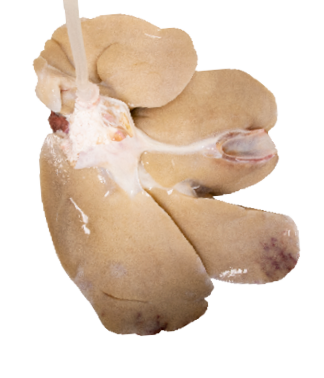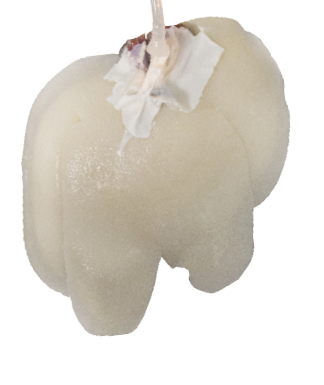Proprietary Hepatic perfusion decellularization process
With Reprise’s proprietary perfusion decellularization process, the main vasculature of the liver is cannulated and perfused with a mild solution through the native vessels. The result is a preserved collagen scaffold with vasculature that retains strength and a micro-environment allowing cellular integration.



Today, the most widely recognized method of removing cells is immersion decellularization, which is accomplished through the submersion of a tissue or organ in chemical and enzymatic treatments. Immersion decellularization is constrained to thin tissues with limited vascular systems because the technology relies on the chemicals to diffuse from the outer surface inward, then back out once the cells are removed.
Reprise’s perfusion decellularization process overcomes the hurdles associated with immersion decellularization by facilitating rapid access to the whole organ. This is accomplished by cannulating the main vasculature and perfusing a mild detergent solution through the native blood vessels. Because organs are rich in vasculature, most cells are located in close proximity to a capillary, resulting in an exponential increase in the effective surface area of the detergent and decreased time to rid of the cellular material as it is expelled through the venous system.
The result is a preserved native scaffold containing the appropriate strength and microenvironment for cellular integration after implantation in the patient.
SM-00199 Rev. A 08/22
